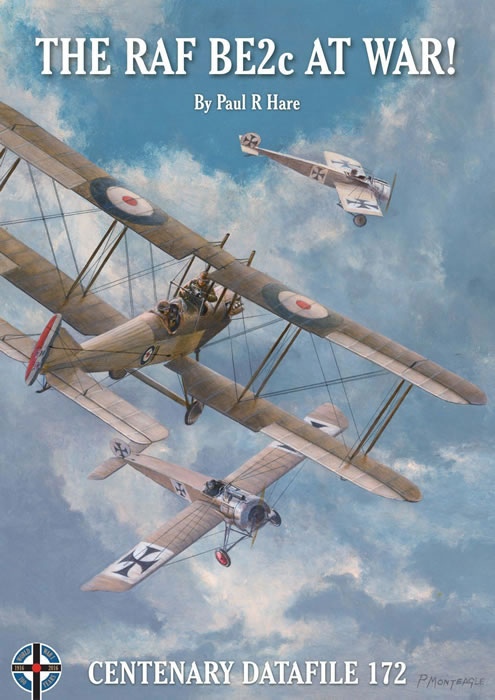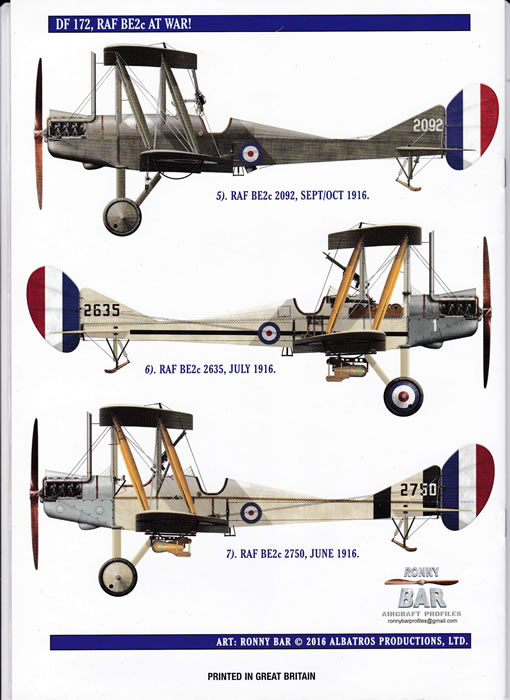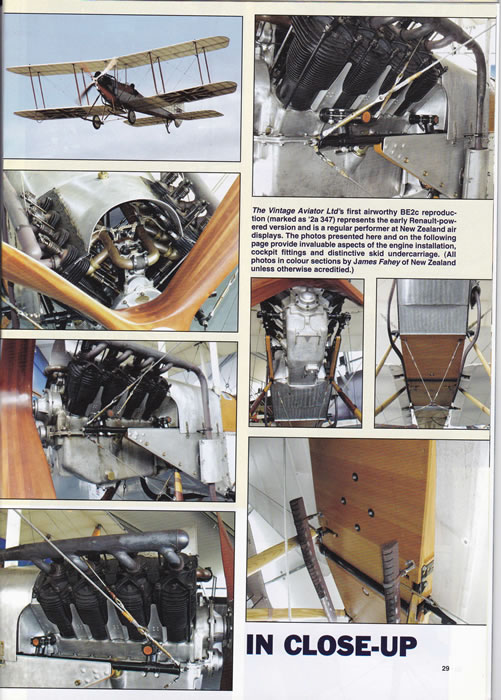Windsock Centenary Datafile # 172
The RAF BE2c At War!

Albatros Productions
S u m m a r y |
| Publisher and Title: |
Albatros Productions
The RAF BE2c At War!
Windsock Centenary Datafile # 172
By Paul R. Hare
ISBN 978 1 906798 49 9 |
| Media: |
Soft-cover format; 32 pages plus covers; black and white and colour photographs and line drawings. |
| Price: |
£12.50 plus postage. Available online from www.windsockdatafilespecials.co.uk and selected specialist book and hobby shops worldwide. |
| Review Type: |
First Read |
| Advantages: |
Popular WW1 subject for modellers; well written and copiously illustrated; very useful modelling reference source. |
| Disadvantages: |
Colour images focus on replica aircraft, not enough on preserved original machines. |
| Conclusion: |
An excellent addition to the Windsock Datafile range, profusely illustrated guide to a classic WW1 British aircraft. |
Reviewed by David Wilson

HyperScale is proudly supported by Squadron.com
WW1 modellers love to plan wish lists of 1/32 scale kits they wish Wingnut Wings would release and heading most lists is the elegant albeit somewhat delicate 2 seat reconnaissance BE2c.
The Royal Aircraft Factory BE2 was a single-engine two-seater biplane used in various incarnations by the Royal Flying Corps from the beginning until the end of World War I. It was a significant machine for the RFC but ultimately became easy prey to marauding Fokker fighters.
About 3,500 BE2s in different variants were built. The pre-WW1 design was initially used for front-line reconnaissance and pioneering bomber tasks and later went on to also serve as a night fighter.

The BE2 stayed in front-line service long after it was obsolete. It was a stable platform for observation duties at a time when stability mattered more than speed or defensive armament. Later it saw use as a trainer, communications aircraft and even coastal patrol duties.
The BE2 was unsuited to air-to-air combat but its stability made it useful for artillery observation and aerial photography duties.
Of the various variants, the BE2c was regarded as ideal for the crew’s reconnaissance duties. The first BE2 went into squadron service just before the outbreak of war and soon saw significant squadron use in France.
Windsock Centenary Datafile #172 offers a fresh appraisal of the BE2c from Paul R. Hare and as the title indicates, it focuses on the type’s war service.
The Datafiles are traditionally pitched at a dual audience of aviation history enthusiasts and modellers. As such, they tread a necessarily thin line to deliver something of interest and use to all readers.

From the modelling perspective there’s much here to like. Copious black and white archive photos, excellent 1/48th and 1/72 scale drawings from Mick Davis which cover most of the BE variants and several pages of excellent side view colour profile artwork from Ronny Bar – famous to all Wingnut Wings enthusiasts.
While 1/32 scale modellers continue to wish for a BE2c in their scale, the type has been well served in Roden’s excellent 1/48th kits and Airfix’s 1/72 model.
The Datafile also features several colour spreads of replica BE2s made by NZ’s The Vintage Aviator (TVAL) and close up colour images showing the internal details of these machines are a real boon for the modeller.
That said, a gripe surrounds the heavy colour photo focus on TVAL replicas at the expense of preserved original BE2s. There are few colour photos of the preserved aircraft and none offering any close up detail of museum examples.
Nevertheless the Datafile is still an essential reference for WW1 modellers wanting the iconic two seater in their RFC collection.
A welcome addition to the WW1 reference library.

Review Copyright © 2018 by David Wilson
This Page Created on 3 January, 2018
Last updated
3 January, 2018
Back to HyperScale Main Page
Back to Reviews Page
|
